Camera shots and angles are fundamental elements in filmmaking, shaping storytelling and emotional impact. From establishing shots to close-ups, and high-angle to low-angle shots, these techniques guide viewer attention and create visual composition effectively.
Importance of Camera Shots and Angles in Filmmaking
Camera shots and angles are essential storytelling tools in filmmaking, as they influence how audiences interpret scenes and emotions. By framing subjects in specific ways, directors guide viewer focus and create visual emphasis. Shots like close-ups highlight emotions, while wide shots establish settings, ensuring clarity and context. Angles, such as high or low shots, manipulate perspective, affecting how characters are perceived. These techniques enhance storytelling depth, evoke emotions, and maintain pacing. Proper use of shots and angles ensures visual balance and continuity, making them vital for effective cinematic communication and audience engagement.
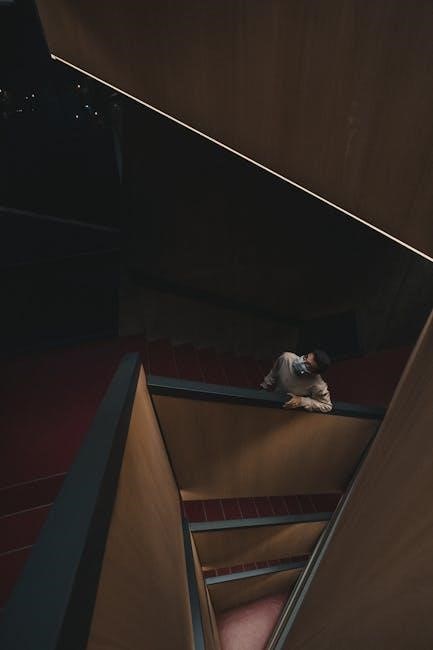
Brief Overview of Common Camera Shots
Common camera shots include the extreme wide shot, wide shot, medium shot, close-up, and extreme close-up. These shots vary in framing and distance, each serving a unique purpose. The extreme wide shot captures vast settings, establishing context. Wide shots display both subject and environment, while medium shots focus on the subject, often including upper body. Close-ups highlight facial expressions or key details, and extreme close-ups isolate specific features. Each shot type is chosen to convey particular emotions or information, ensuring dynamic storytelling and visual variety. Understanding these basics is crucial for filmmakers to effectively communicate their vision and engage audiences.
Understanding the Impact of Camera Angles
Camera angles play a crucial role in shaping the emotional and psychological impact of a scene. High-angle shots, where the camera looks down at the subject, can make characters appear vulnerable or weak, often used in horror or dramatic scenes. Low-angle shots, conversely, position the camera below the subject, emphasizing power or heroism. Eye-level shots create a neutral perspective, making scenes feel natural and relatable. Dutch angles, or canted shots, tilt the camera to create a sense of unease or disorientation. Point-of-view shots immerse the audience in a character’s perspective, enhancing empathy; Each angle is carefully chosen to guide the viewer’s emotions and perceptions, making camera angles a powerful storytelling tool in filmmaking. By manipulating these angles, directors can subtly influence audience reactions and deepen the narrative’s impact.
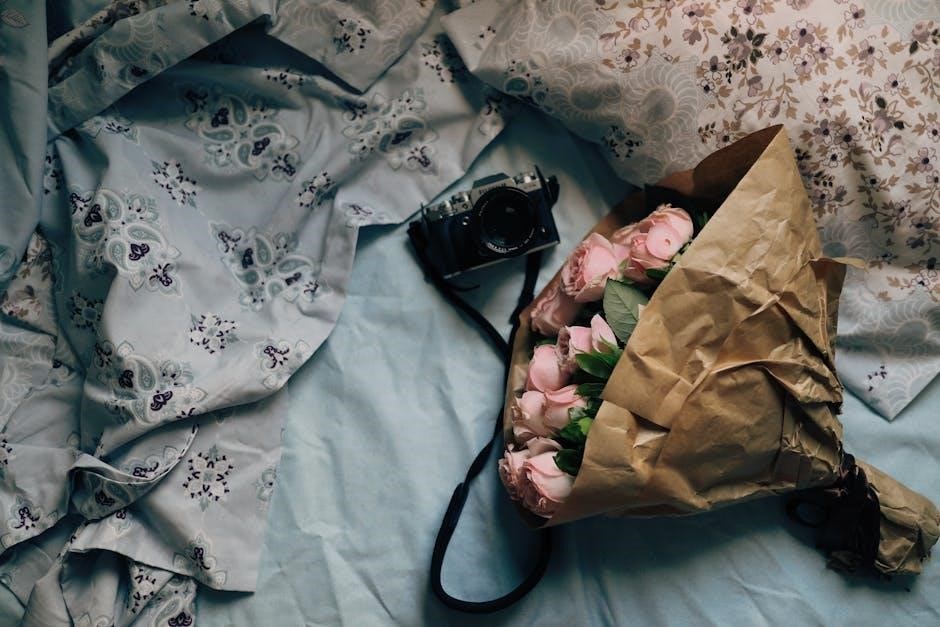
Types of Camera Shots
Camera shots vary in framing and distance, capturing scenes from extreme wide shots to extreme close-ups. Each shot type, like wide, medium, close-up, and extreme close-up, serves distinct storytelling purposes and emotional impacts.
Extreme Wide Shot (Establishing Shot)
The extreme wide shot, or establishing shot, captures a broad view of the scene, often showcasing the setting and context. It is typically used at the beginning of a scene to establish the location, providing viewers with spatial orientation and setting the tone. This shot is essential for creating a sense of scale, making characters appear small within their environment. It is commonly employed in genres like epic films or horror to emphasize vastness or isolation. The extreme wide shot helps the audience understand the relationship between characters and their surroundings, offering a visual anchor before transitioning to tighter, more intimate shots. By framing the entire setting, it sets the stage for the narrative to unfold, making it a crucial storytelling tool in filmmaking.
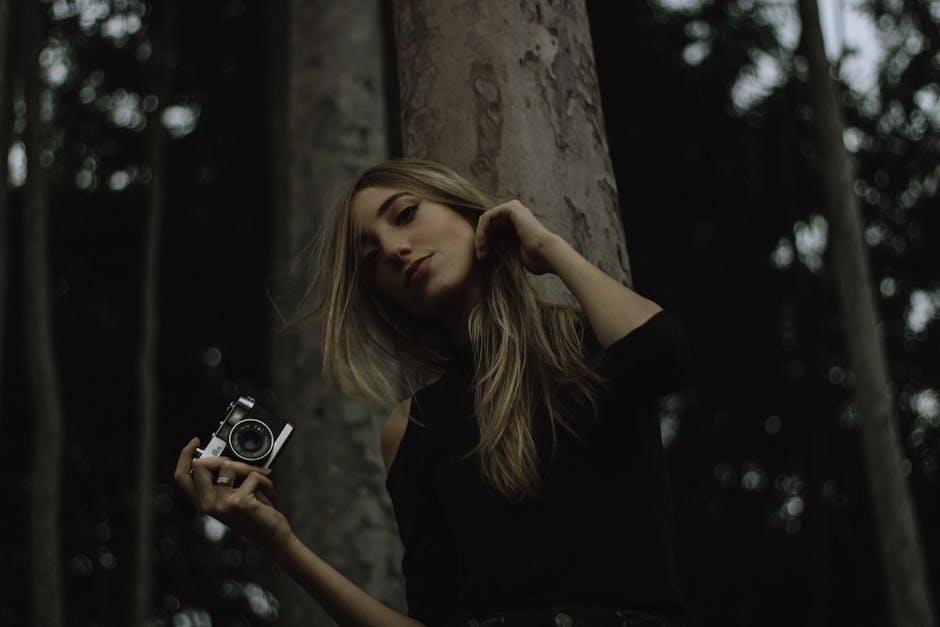
Wide Shot
The wide shot captures the entirety of a scene, displaying both the subject and their surroundings. Unlike the extreme wide shot, it focuses more on the subject while still providing context. This shot is ideal for showing character movements and interactions within the environment. It is often used to establish the setting without making the subject appear too small. The wide shot is versatile, suitable for both interior and exterior scenes, and allows the audience to see the spatial relationships between elements. It is commonly used in dialogue scenes to show multiple characters interacting. By balancing subject and setting, the wide shot offers a clear view of the action, making it a popular choice for filmmakers to convey both emotion and context effectively. This shot is essential for maintaining visual storytelling and ensuring the audience remains engaged with the unfolding narrative.
Medium Shot
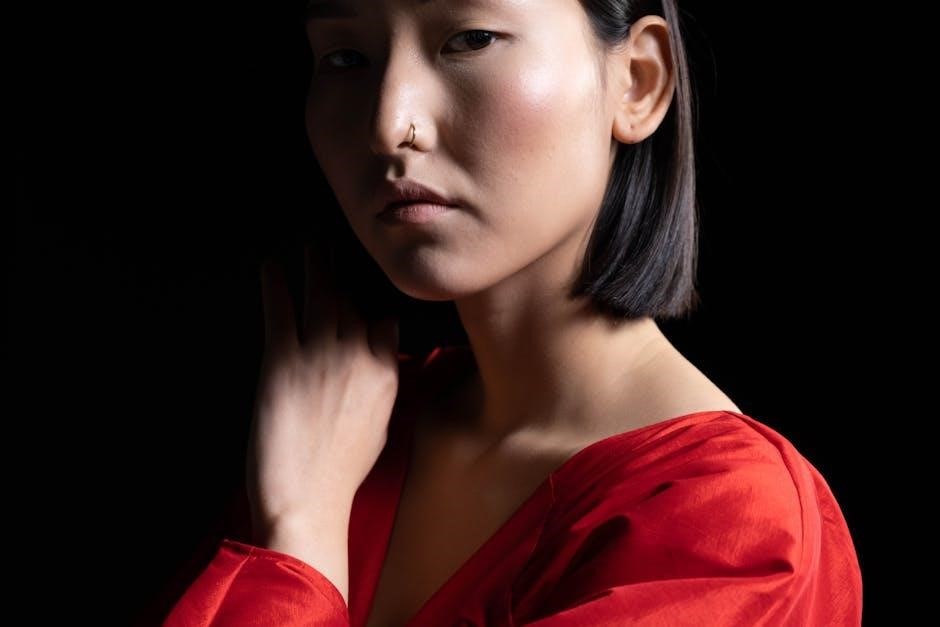
A medium shot frames the subject from the waist up, providing a balance between the individual and their surroundings. This shot is widely used in dialogue scenes, as it captures facial expressions and body language while maintaining context. It allows the audience to connect with the character emotionally without isolating them from the environment. The medium shot is versatile, suitable for both individual characters and small groups, and is often used in interviews or scenes where interaction between characters is key. It helps maintain visual storytelling by keeping the focus on the subject while still providing enough setting to understand the scene. This shot is particularly effective in conveying emotions and reactions, as it highlights both the character’s expressions and their physical gestures. By blending the subject with the environment, the medium shot creates a natural and engaging visual experience for the viewer, making it a fundamental tool in filmmaking. It is a go-to choice for directors seeking to balance intimacy and context in a scene.
Close-Up Shot
A close-up shot is a framing technique where the camera focuses tightly on a subject, typically the face, to emphasize emotions, reactions, or significant details. This shot is essential in filmmaking for creating emotional depth and engagement. By isolating the subject from the background, it draws the audience’s attention to specific elements, such as facial expressions, which convey nuanced feelings that might be lost in wider shots. Close-ups are particularly effective in dramatic or intense moments, allowing viewers to connect deeply with the character’s experience. They are also used to highlight important objects, like a crucial prop or document, underscoring their significance in the narrative. Additionally, close-ups can vary in intensity, from a slight zoom on the eyes to a more extreme focus on a specific feature. However, it’s important to use close-ups judiciously; excessive use can make the scene feel disjointed or overwhelming. When employed thoughtfully, the close-up shot enhances storytelling by focusing on what truly matters, ensuring that key moments leave a lasting impression on the audience. This makes it a versatile and impactful tool in a director’s arsenal, capable of elevating both character-driven and plot-centric scenes alike.
Extreme Close-Up Shot
An extreme close-up shot (ECU) is a highly detailed framing technique that focuses intensely on a specific part of the subject, such as the eyes, lips, or an object. This shot is used to emphasize emotions, reactions, or small but significant details that might otherwise go unnoticed. For instance, an ECU of tears welling up in a character’s eyes can convey deep sadness or vulnerability, while a close-up of fingers trembling on a trigger might build tension. The ECU is often employed in dramatic or pivotal moments to heighten emotional impact and create a strong connection with the audience. It isolates the subject from the surrounding environment, making the viewer focus solely on the detail in question. This shot is particularly effective in horror or thriller genres to amplify suspense or fear. However, it should be used sparingly to avoid overwhelming the viewer, as excessive use can disrupt the flow of the narrative. When applied strategically, the extreme close-up shot becomes a powerful storytelling tool, capable of amplifying emotions and drawing the audience deeper into the scene.
Camera Angles
Camera angles are essential in filmmaking, as they influence the viewer’s perception and emotional response. They guide focus, establish tone, and create visual hierarchy, making scenes more engaging and storytelling more effective.
High-Angle Shot
A high-angle shot captures a scene with the camera positioned above the subject, looking down. This technique often diminishes the subject’s perceived power or strength, creating a sense of vulnerability. It is frequently used to emphasize a character’s helplessness or inferiority, particularly in genres like horror or drama. The high angle can also establish a broader context, showing the environment’s scale relative to the subject. Filmmakers employ this shot to guide the audience’s emotional response, making the viewer feel sympathetic or powerless alongside the character. Additionally, high-angle shots can be used to reveal spatial relationships within a scene, offering a more comprehensive view of the setting. This visual storytelling tool is crucial for conveying specific moods and themes effectively in film.
Low-Angle Shot
A low-angle shot is filmed from below the subject, with the camera pointing upward. This technique often creates a sense of power, heroism, or dominance, as it makes the subject appear larger-than-life. It is commonly used to emphasize a character’s strength, authority, or heroism, such as in scenes depicting leaders or superheroes. Low-angle shots can also add drama or tension, drawing attention to the subject’s emotions or actions. Additionally, this angle can highlight the environment’s grandeur or scale, making the setting feel more imposing or awe-inspiring. The psychological impact of a low-angle shot is significant, as it can evoke feelings of admiration or intimidation in the viewer. Filmmakers often use this shot to guide the audience’s emotional response, making the subject stand out against the background. Its versatility makes it a popular choice across various genres, from action films to dramas, to create a dynamic visual narrative.
Eye-Level Shot
An eye-level shot frames the subject at the same height as the camera, aligning with the subject’s eye line. This neutral angle creates a sense of equality between the viewer and the subject, often used to establish a natural, realistic feel. It is commonly employed in dialogue scenes to make the audience feel part of the conversation. The eye-level shot minimizes psychological manipulation, allowing the viewer to interpret the scene without imposed emotional bias. This technique is versatile and subtle, blending seamlessly into the narrative without drawing attention to itself. Filmmakers use it to build rapport between the audience and characters, fostering a sense of connection and normalcy. The eye-level shot is a fundamental tool in storytelling, providing clarity and balance in visual composition. It is particularly effective in dramas and realistic films where authenticity is key. By maintaining a neutral perspective, it ensures the focus remains on the action and emotions within the scene.
Dutch Angle (Canted Shot)
A Dutch Angle, or Canted Shot, involves tilting the camera to one side, creating a composition where the horizon is not parallel to the frame. This dynamic technique adds visual interest and psychological impact, often used to convey unease, tension, or disorientation. It can make the scene feel off-balance, emphasizing drama or instability. The Dutch Angle is commonly used in horror, thriller, or action genres to heighten suspense. By altering the viewer’s perspective, it draws attention to specific elements in the frame and creates a sense of uneasiness or uncertainty. Filmmakers often employ this shot to signal a shift in mood or to reflect a character’s emotional state, such as confusion or chaos. The Dutch Angle is a powerful storytelling tool, adding depth and complexity to a scene through its unconventional framing. It is a memorable and effective way to engage the audience visually and emotionally, making it a popular choice for creating striking visuals in film and media.
Over-the-Shoulder Shot
The Over-the-Shoulder Shot (OTS) is a widely used technique in filmmaking, framing one character from behind the shoulder of another. This shot is essential for dialogue scenes, as it captures both the speaker and the listener’s reactions, maintaining a dynamic interaction. By including the shoulder, it establishes spatial relationships and adds depth to the scene, making it more engaging than a simple close-up. The OTS shot also helps in maintaining eye contact between characters, enhancing the emotional connection for the audience. It is particularly useful in conversational sequences, providing context and visual interest while keeping the focus on the speaker. Filmmakers can adjust the framing to emphasize one character over the other, and the shot is often combined with camera movements to add variety. The Over-the-Shoulder Shot is a versatile tool that enhances storytelling by capturing the nuances of character interactions effectively.
Point of View (POV) Shot
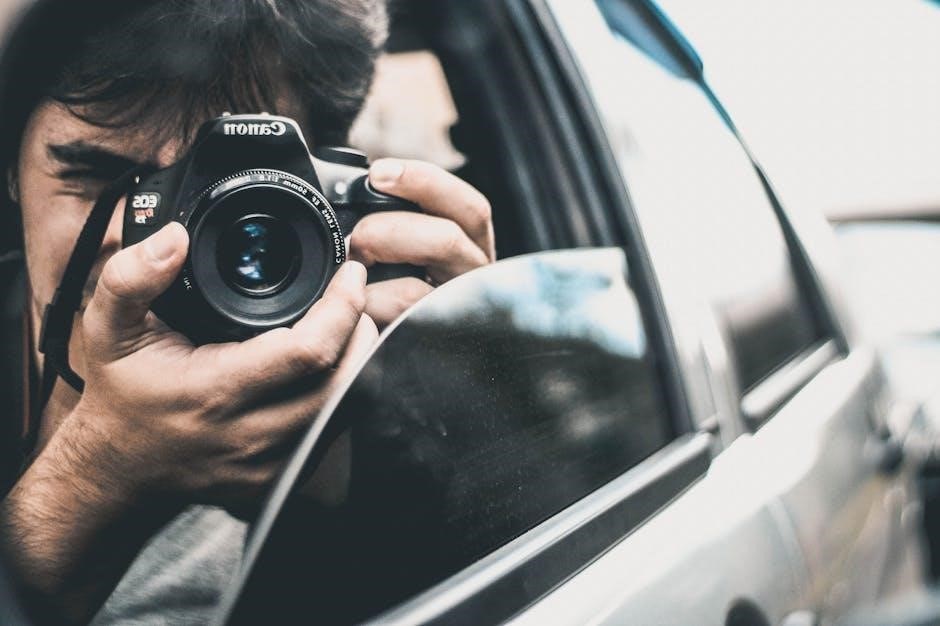
The Point of View (POV) Shot is a filming technique that shows a scene from a character’s perspective, immersing the audience in their experience. This shot is crucial for creating empathy and understanding, as it allows viewers to see what the character sees, heightening emotional engagement. Often used to convey a character’s thoughts or reactions, the POV shot is typically preceded by a close-up of the character looking at something, followed by the POV shot itself. Filmmakers use this technique strategically to guide the audience’s focus and build suspense or curiosity. The POV shot can also be combined with other camera movements, such as a zoom or tilt, to enhance the emotional impact. By aligning the audience’s viewpoint with the character, the POV shot strengthens the narrative connection, making the scene more relatable and impactful. This technique is widely used in various genres to effectively communicate a character’s perspective and deepen the audience’s involvement in the story.
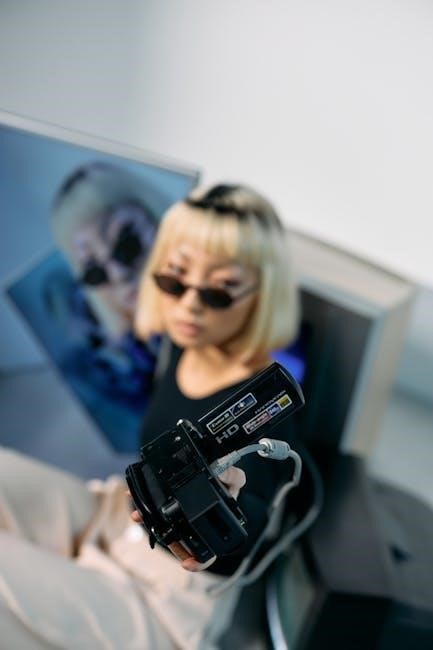
Camera Movements
Camera movements enhance storytelling by adding depth and emotion through dynamic visual techniques. Dolly, tracking, crane, tilt, and pan shots create fluid transitions, guiding viewer focus and immersing them in the scene effectively.
Dolly Shot
A dolly shot involves moving the camera along a track toward or away from the subject, creating a smooth, controlled motion. This technique avoids the shakiness of handheld camera movements, ensuring professional-quality footage. The dolly shot is commonly used to emphasize emotional moments, build tension, or highlight the environment. By moving the camera closer to the subject (dolly in), filmmakers can amplify emotions or focus attention on specific details. Conversely, dollying out (moving the camera away) can reveal more of the scene or create a sense of isolation. This movement is often paired with zooms or combined with other camera angles to enhance storytelling. Dolly shots are essential for creating dynamic, immersive scenes and are widely used in various genres to guide audience focus and evoke desired emotions effectively.
Tracking Shot
A tracking shot involves the camera moving alongside a subject as it travels through a scene, capturing its motion smoothly. This technique is often used to follow characters, vehicles, or objects, providing a dynamic and immersive viewing experience. Tracking shots can be achieved using camera rigs, cranes, or even handheld setups, depending on the terrain and desired effect. They are particularly effective in conveying the environment, emphasizing a character’s movement, or building suspense by maintaining focus on the subject. Tracking shots can be horizontal, vertical, or even circular, offering versatility in storytelling. They are widely used in action sequences, dramatic moments, and scenes requiring a sense of fluidity. By keeping the subject in frame while moving, tracking shots enhance narrative engagement and create a seamless connection between the audience and the action unfolding on screen.
Crane Shot
A crane shot is a type of camera movement where the camera moves vertically, typically from a low to a high angle or vice versa, using a crane or similar equipment. This shot is often used to emphasize the height of objects, scenes, or characters, creating a dramatic or awe-inspiring effect. Crane shots are particularly effective in establishing settings, such as showcasing a grand building or a vast landscape. They can also be used to highlight the scale of a scene, making characters appear small in contrast to their surroundings. Additionally, crane shots can convey emotional depth, such as lifting the camera to symbolize hope or lowering it to signify despair. While traditional crane shots require specialized equipment, modern filmmakers often achieve similar effects using drones or other advanced technologies. The crane shot is a powerful tool in filmmaking, adding visual grandeur and enhancing storytelling through its dynamic perspective.
Tilt Shot
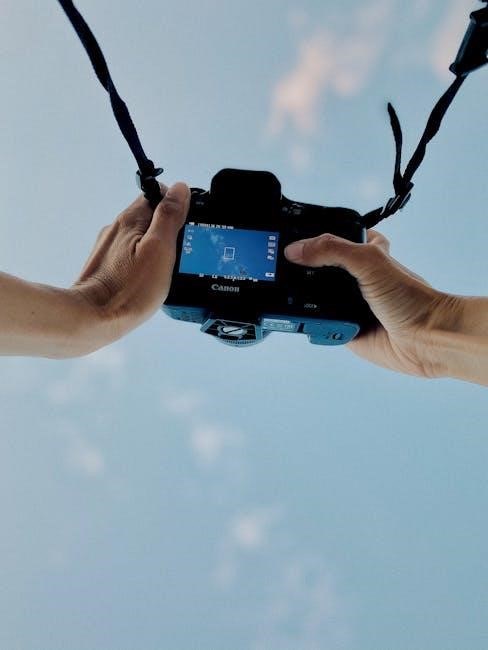
A tilt shot is a camera movement where the camera rotates along a vertical axis, moving from top to bottom or bottom to top. This technique is used to reveal or emphasize elements within a scene, creating a sense of hierarchy or scale. For instance, a tilt shot might start at a character’s feet and move upward to reveal their face, or begin at a towering object and tilt down to show its surroundings. Tilt shots can convey emotions such as wonder or intimidation, depending on the context. They are often employed in dramatic or action sequences to heighten tension or highlight specific details. Unlike panning, which moves horizontally, tilting adds a dynamic, almost three-dimensional quality to the scene. This movement can also be used to guide the viewer’s attention, drawing focus to particular aspects of the frame. Tilt shots are versatile and widely used, enhancing both narrative and visual storytelling in film and video production.
Pan Shot
A pan shot is a horizontal camera movement where the camera rotates from side to side on a fixed axis, capturing a wide view of the scene. This smooth, continuous motion is often used to follow moving subjects, reveal settings, or establish context. Panning is achieved by turning the camera left or right without moving its position. It is commonly used to track action, such as a character walking across a room or a car driving through a landscape. The pan shot can also be used to create a sense of depth by gradually revealing elements within the frame. For example, panning across a city skyline or a crowded market can immerse the viewer in the environment. This technique is particularly effective in documentary filmmaking to showcase vast spaces or in narrative films to convey the scale of a scene. By guiding the viewer’s attention, the pan shot enhances storytelling and visual composition seamlessly.